Once upon a time there was almost nothing, as there often is.
Green fields, sylvan glades and a pleasant park in Grosvenor Square.
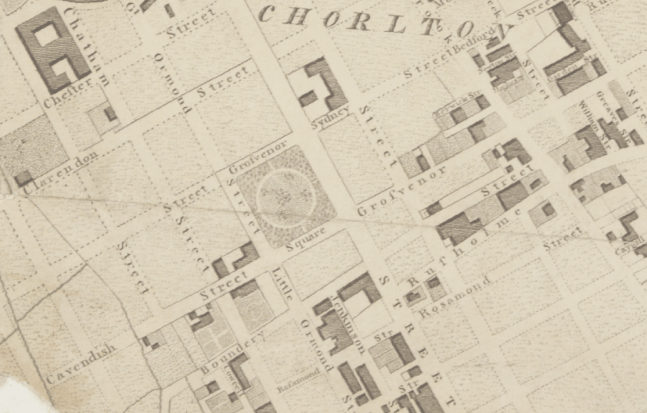
Then all of a sudden, at the heart of the Square sat All Saints Church.
Underneath Manchester’s All Saints Park is a hidden history – an estimated 16,000 bodies. For this was the site of a former Victorian Cemetery, set up to cater for the parishioners of All Saints.

All Saints Burial Ground officially opened on Wednesday 19 April 1820. The first interment was that of twenty-one-year-old Fanny Knowles, who lived on London Road. Her funeral was conducted by the founder himself, Charles Burton. It would be another month before the next interment took place. In the first year burials were slow with only 55 interments, however, by 1851 the number had increased to over 600 per annum.
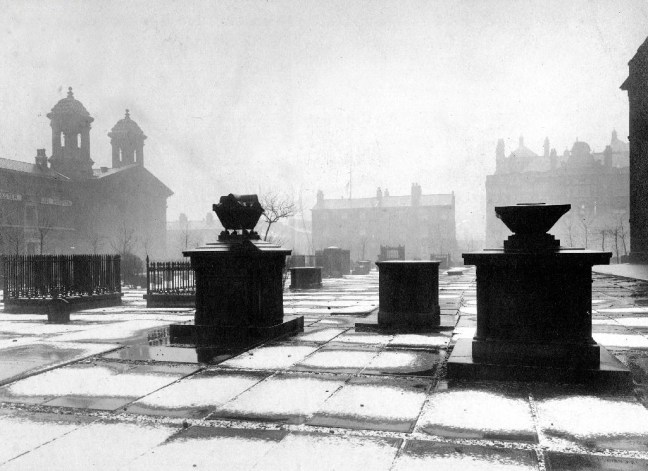
Bombed in the Blitz the damaged structure was demolished – and a play area established which lasted until the 1980s
The whole area having been a centre of housing, education, entertainment, commerce, public services and worship, was becoming the fiefdom of first the Polytechnic and subsequently the Manchester Metropolitan University.
But formerly there were peoples’ homes here.
Then the 1960s saw a huge programme of slum clearance in Manchester and whole communities across the Square and nearby Hulme were moved, rehoused in a thoroughly modern milieu.
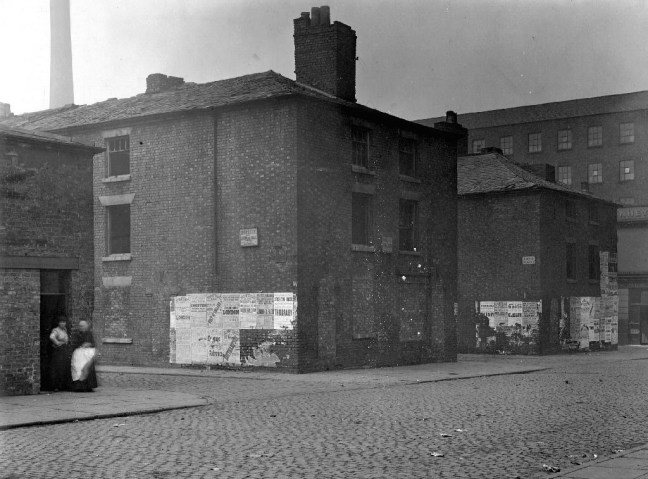


Shops came and went.


Paulden’s magnificent store was destroyed by fire in 1957

Rightons haberdashers has survived though no longer haberdashing, having been amalgamated into MMU.
One day On The Eight day moved a little to the left
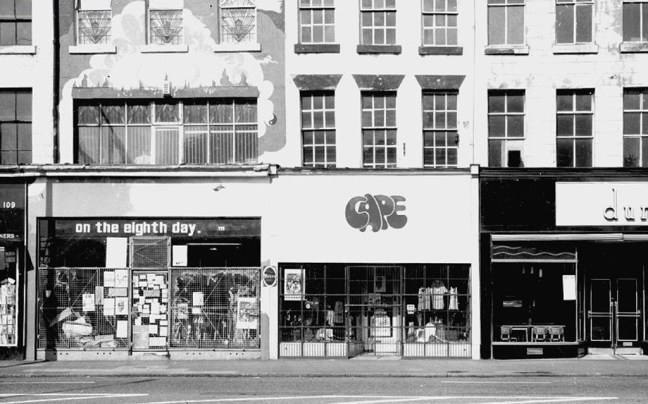
The Manchester Municipal School of Art was built in Cavendish Street in 1880–81 to the designs of G.T.Redmayne.

The fascia has been retained but the name has not been changed to protect the innocent.
Next door the Chorlton on Medlock town hall still has its portico in place, the adjacent Adult Education building has been surgically removed.
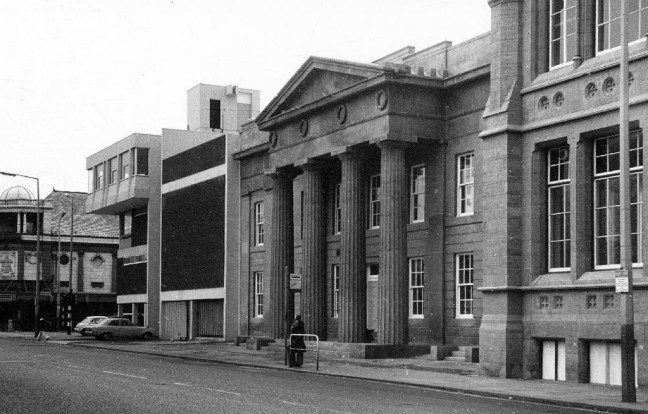
Richard Lane, the architect of the Friend’s Meeting House on Mount Street, designed the Chorlton-on-Medlock Town Hall on Grosvenor Street. It continued in that role from 1831 until 1838 when Chorlton-on-Medlock became part of the city of Manchester. In the years that followed it was used by the local community for a variety of functions but the redevelopment of the area meant that the local population diminshed and the building became redundant. In 1970, the interior was removed, a new structure added to the rear and it became part of the Polytechnic which became the Manchester Metropolitan University.
The Fifth Pan African Conference was held there between October 15th and 21st in 1945. Ninety delegates from across Africa, Europe and the Caribbean, attended the meeting and among the delegates were a number of men who went on to become political leaders in their countries including: Hastings Banda, Dr Kwame Nkrumah, Obafemi Awolowo and Jomo Kenyatta.

Former Chorlton Poor Law Guardian’s HQ then Registry Office, now the Ormond Building of Metropolitan University – and at the far right edge St Augustine RC.
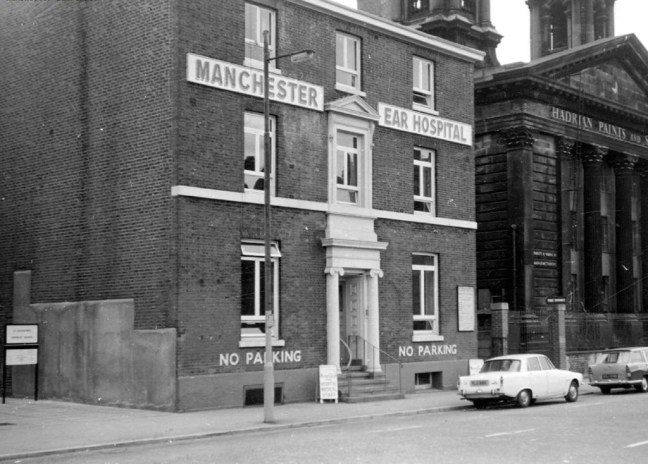

The Manchester Ear Hospital on Lower Ormond Street, shortly before being transferred to Manchester Royal Infirmary. Most of the building was demolished, but the facade retained as part of MMU’s Bellhouse Building.
To the right the Presbyterian Church.
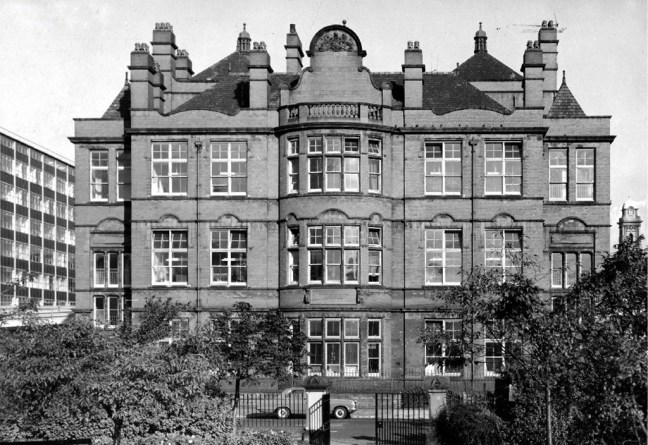
Cavendish Street School

The memorial stone on the front of the school, laid on June 17th, 1908, declared that it was the Forty Seventh Municipal School. Strangely, it seems that it was called the Cavendish Street School despite the fact that it wasn’t on Cavendish Street.
Manchester History
It was subsequently utilised by the Polytechnic sculpture department – then demolished to make way for something else of an educational nature.
Some or all of our social and architectural history has been overwritten, lost or swept aside by the tide of history.
Though on a dark snowy night you can still make out the bright red corporation buses, passing by in a dark cloud of diesel.
Room on top.
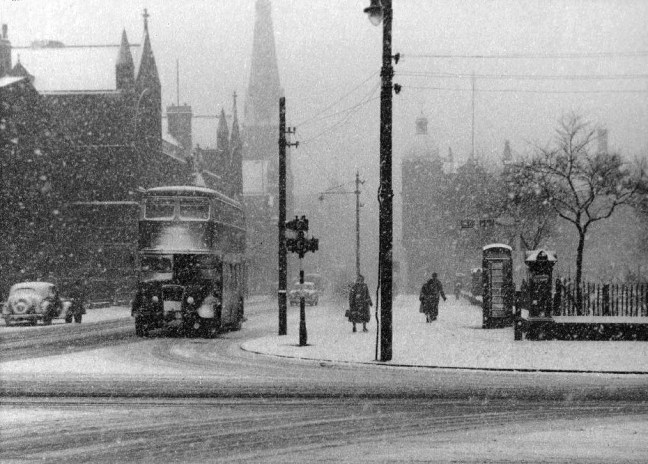
Archive images Local Image Collection










This is excellent. Many thanks.
LikeLike
Really enjoyed the writings and photo. Went MMU 1991-97 MA Art as Env. Buildings always held its history even after the refurb in 1994. Grandparents lived in Hulme & Moss Side WW2, seeing old maps reminds me of the cobbled streets prior to 60/70s great demolition. Thank you
LikeLike
So emotional for me. Knew the area so well. From being a few months old we lived in one of the smallest houses in Mancheste. The street Lyceum place. Went to Cavendish street School. But who knows where Lyceum place was without looking it up.
LikeLike
I used to deliver newspapers to Lyceum Place just off Chatham Street as a young teenager from 1950 to 1954 when I left St. Augustines boys school. Continued to live on Clarendon Street at the paper shop till it was demolished and spent many happy hours in All Saints park.
LikeLike
Very interesting article and photographs. Never realized the enormity of the changes made to this area of Manchester and this article offers a glimpse of that time. I was surprised to see mention of Lyceum Place does anyone have an further info on this street. (I had family who lived there until 1940)
LikeLike
Did you know my brother, John O Connor?.and Cousin Tom ..
LikeLike
i went to cavendish street and played in the grave yard in the 1940s and 1950s left school in 1957 s st augustine boys had part of are school.
LikeLike
Really enjoyed these photographs. I lived on Jenkinson Street in the 1960’s, went to Cavendish St infants school and when I when I saw the photo of the Ear Hospital – wow that’s where I had my tonsils out when I was six! I remember one of the nurses being a right battle axe and slapping my legs because I was crying for my mum – thank God some things have changed. Also, played in All Saints park many times. There was a “witches hat” and can just make it out in the photo. Guess health and safety wouldn’t allow one of those these days.
LikeLike
Great emerges – good and bad, no more witches hat and “dangerous” swings!
LikeLike
does anyone know what year all saints church actually got demolished .
LikeLike
Don’t know exactly but I remember climbing in the bombed ruins in about 1950 and it must have been demolished shortly after, maybe 1951/2. Replaced with the gardens, playground and a toilet. The witches hat was frightening but good fun. The entrance to the playground was opposite the Ear, nose and throat hospital where I had my tonsils out when I was 26 in 1965. I went to the Holy Family infants, then St Augustines at Cavindish School before moving to the prefab boys secondary modern on York Street till I left at 15 in 1954.
LikeLike
I believe in the early 1950’s. I remember playing in the bombed ruins in 1950, so maybe 1951/2. the site was then made into All Saints Gardens, a children’s playground and a small toilet block. The “Witch’s Hat” was frightening but good fun and I spent many a happy hour there. The park faced the Ear, Nose and Throat hospital where I had my tonsils out aged 26 in 1965. I attended Holy Family infants school next to the hospital, transferring to St. Augustines junior school based in Cavendish Street School and then to the secondary modern prefab school on York Street. I stood on the corner of Clarendon Street and Lower Chatham Street to watch Pauldens burn down in about 1959/60.
LikeLike
Lived in Lower Ormand St directly behind Cavendish School, went all the way through from a 3 year old left in 1962.
Great memories.
LikeLike
Evoked half forgotten memories of passing the area daily as I went to Central High School from 1945 to 1949, also having a “treat” of cheese on toast and a cream meringue at Pauldens cafe when I started work. Couldn’t afford more expensive fare
LikeLike